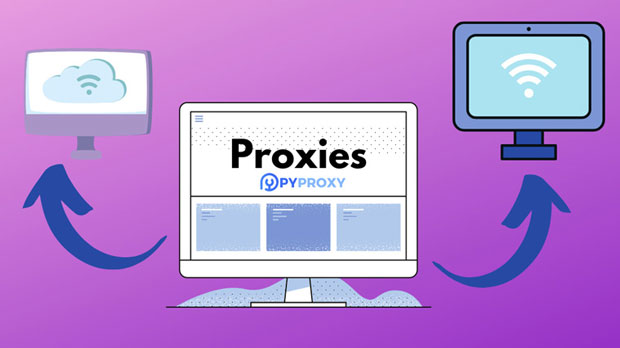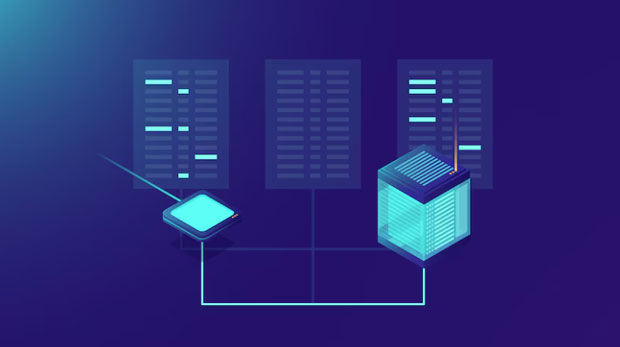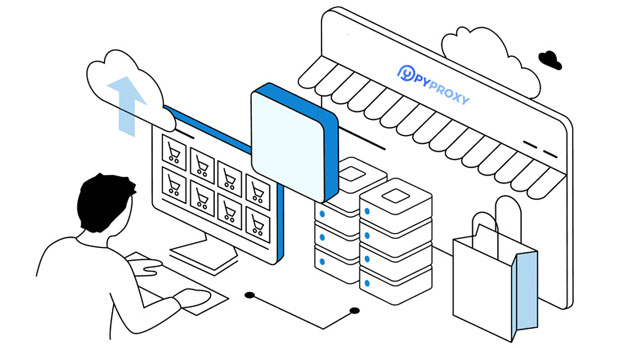In the world of proxy services, having a reliable and easy-to-use API is critical for seamless integration into existing applications. PYPROXY and ProxyRack are two popular platforms offering proxy solutions, each with its own API. But which one provides a more user-friendly and easily integrable API interface? This article aims to compare the two platforms in terms of their API design, documentation, ease of use, and overall integration experience, helping users choose the best solution for their needs. Overview of PyProxy and ProxyRackBefore diving into the comparison, it is essential to understand what PyProxy and ProxyRack offer. Both platforms provide proxy services, enabling users to mask their IP addresses, improve online anonymity, and access geo-restricted content. However, their API interfaces vary in structure, complexity, and accessibility.- PyProxy is a Python-focused proxy service, designed for ease of integration with Python-based applications. It is ideal for developers working in Python environments and looking for a seamless proxy integration experience.- ProxyRack, on the other hand, offers a broader range of proxy services and is not limited to any particular programming language. It caters to developers from diverse backgrounds and aims for flexibility across multiple platforms.In this comparison, we will look at the strengths and weaknesses of both platforms, focusing on their API interfaces. Ease of Use and User-FriendlinessWhen it comes to the ease of use and user-friendliness of an API, several factors come into play, such as simplicity, clarity, and the overall developer experience.- PyProxy API: As a Python-focused platform, PyProxy provides a straightforward API that integrates seamlessly with Python-based projects. The service is tailored to Python developers, making it intuitive and relatively easy to use if you are familiar with the language. The API documentation is clear, with examples directly related to Python code snippets, reducing the learning curve significantly for Python developers. The integration process is highly simplified, as developers can leverage Python libraries like `requests` and `http.client` to make API calls with minimal effort.- ProxyRack API: ProxyRack, being a multi-platform proxy service, offers API documentation that covers various programming languages, including Python, Java, and JavaScript. This broad support makes the API accessible to developers across different tech stacks. However, because the documentation is more general and covers a range of languages, it may lack the in-depth examples and Python-specific guidance that PyProxy offers. This can make the integration process slightly more challenging for developers who are looking for a quick and seamless setup.Winner in Ease of Use: PyProxy, especially for Python developers, is the more user-friendly option due to its Python-focused design and straightforward integration steps. API Documentation and SupportGood documentation is key to making any API integration smooth. Without proper guidance, even the best API can become difficult to use. Both PyProxy and ProxyRack offer extensive documentation, but there are differences worth noting.- PyProxy Documentation: PyProxy's documentation is very Python-centric, with a clean, minimalistic structure that includes code examples, installation instructions, and best practices. The API endpoints are well-described, and the process of authentication and making requests is explained step-by-step. Additionally, PyProxy offers easy-to-understand examples and offers troubleshooting tips that can help developers avoid common mistakes.- ProxyRack Documentation: ProxyRack offers comprehensive documentation that supports multiple languages. This multi-language focus can be beneficial for developers working across various tech stacks, but it also means that the documentation is less specialized compared to PyProxy’s. While the documentation is still solid and clear, the examples are more general, which may require extra work for developers trying to implement the API in a specific language.Winner in Documentation: PyProxy provides more specialized and targeted documentation for Python developers, making it easier to integrate with minimal confusion. API Integration and FlexibilityThe ability to integrate an API smoothly into an existing application is crucial for developers. The flexibility of the API determines how easily it can be customized to suit different needs.- PyProxy API: The API offered by PyProxy is simple to integrate, particularly for those familiar with Python. It offers an easy-to-understand system for proxy requests, with a focus on simplicity and reducing boilerplate code. However, being Python-centric, it may not be as flexible for developers working in other languages or environments. PyProxy’s API structure is straightforward, focusing more on minimalism than on providing extensive configuration options.- ProxyRack API: ProxyRack offers a more flexible API, with support for multiple programming languages and configurations. This flexibility is advantageous for developers who may need to work in diverse environments or want to integrate proxies into a complex system. ProxyRack provides a variety of proxy types and customizable settings, such as the ability to rotate IP addresses or specify proxy locations. However, this flexibility comes at the cost of increased complexity in the integration process.Winner in Flexibility: ProxyRack wins in terms of flexibility due to its broader platform support and configurable proxy options. Performance and SpeedThe performance of an API can significantly impact the overall user experience, especially when dealing with a proxy service that requires quick responses and minimal latency.- PyProxy Performance: PyProxy is generally known for providing reliable and fast proxy services, particularly for Python developers. Its API is optimized for performance within Python applications, which contributes to a smoother experience. However, as it’s tailored to Python, its performance might not be as optimized for other programming languages or environments.- ProxyRack Performance: ProxyRack also offers good performance, with fast and stable proxy connections. The service provides a variety of proxy types, including residential and datacenter proxies, which allow users to choose based on their needs. While ProxyRack offers impressive performance, the variety of options can sometimes lead to more complex configurations, which could introduce slight delays if not set up properly.Winner in Performance: Both platforms perform well, but PyProxy may have a slight edge for Python-specific applications, while ProxyRack is excellent for users needing diverse proxy solutions. Customer Support and CommunityStrong customer support can significantly enhance the API integration experience. In this section, we compare the customer support and community presence for both platforms.- PyProxy Support: PyProxy offers solid customer support through various channels, including email and chat. The community around PyProxy is smaller but highly focused on Python development, making it easier to find help within the community if you're using Python. The support team is responsive and provides excellent guidance for troubleshooting API-related issues.- ProxyRack Support: ProxyRack provides extensive customer support, including 24/7 availability and various contact methods. Due to its larger user base across different programming languages, the support team has experience with a wide range of issues. The community is larger, offering a more diverse range of solutions, but it can sometimes be less specialized than PyProxy’s focused community.Winner in Support: ProxyRack, due to its larger community and more extensive customer support options.Both PyProxy and ProxyRack offer excellent API interfaces, but they cater to different needs and use cases. If you are a Python developer seeking a quick, easy-to-integrate solution with minimal friction, PyProxy is likely the better choice due to its specialized API and Python-centric approach. On the other hand, if you need a more flexible, multi-language solution with broader support for various platforms, ProxyRack offers a more versatile API.Ultimately, the decision will depend on your specific requirements—whether you prioritize ease of use, flexibility, or comprehensive support. For Python developers, PyProxy is the winner, while ProxyRack excels for those looking for flexibility and robust support across different programming languages.
Oct 24, 2025



































































